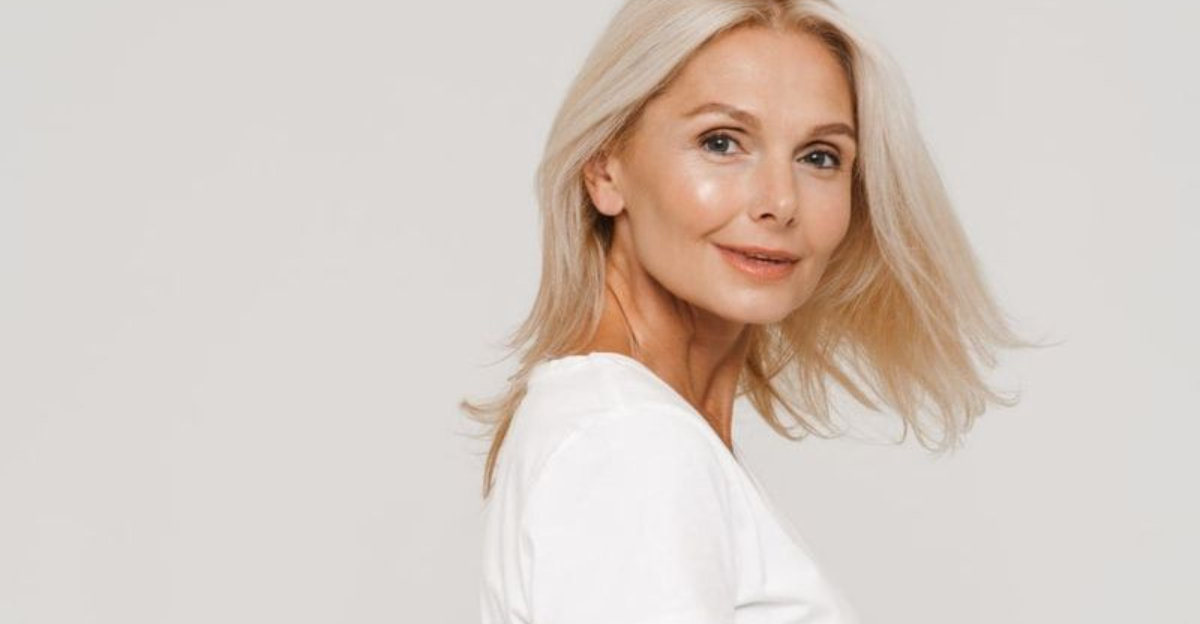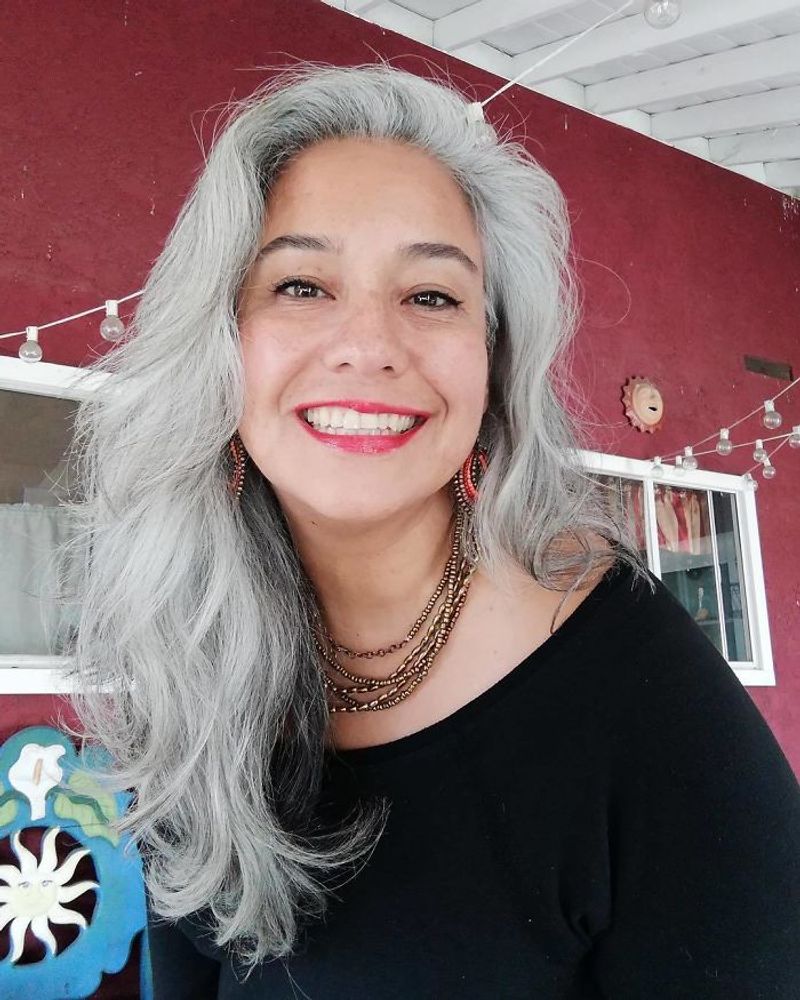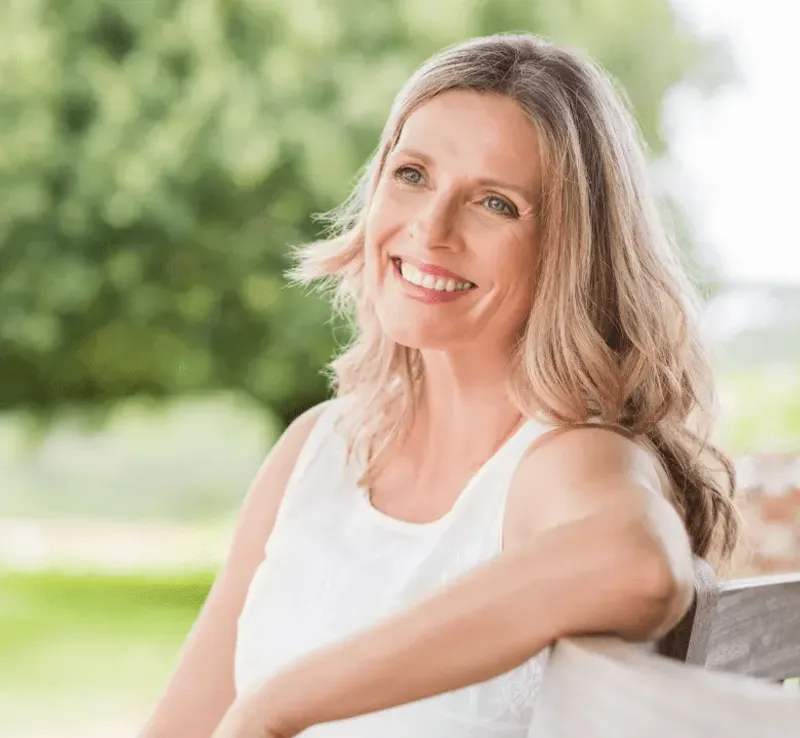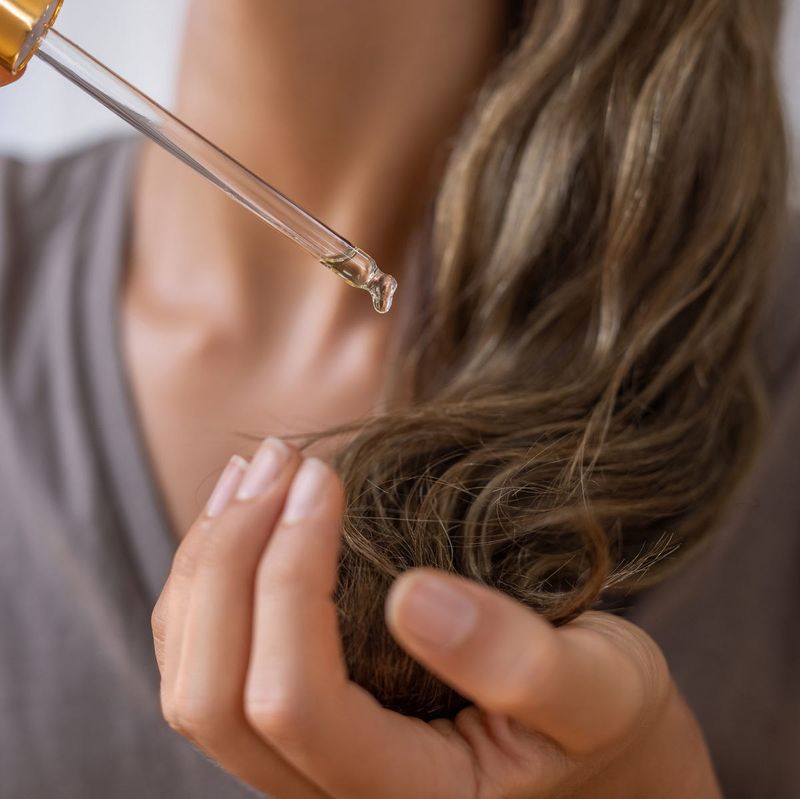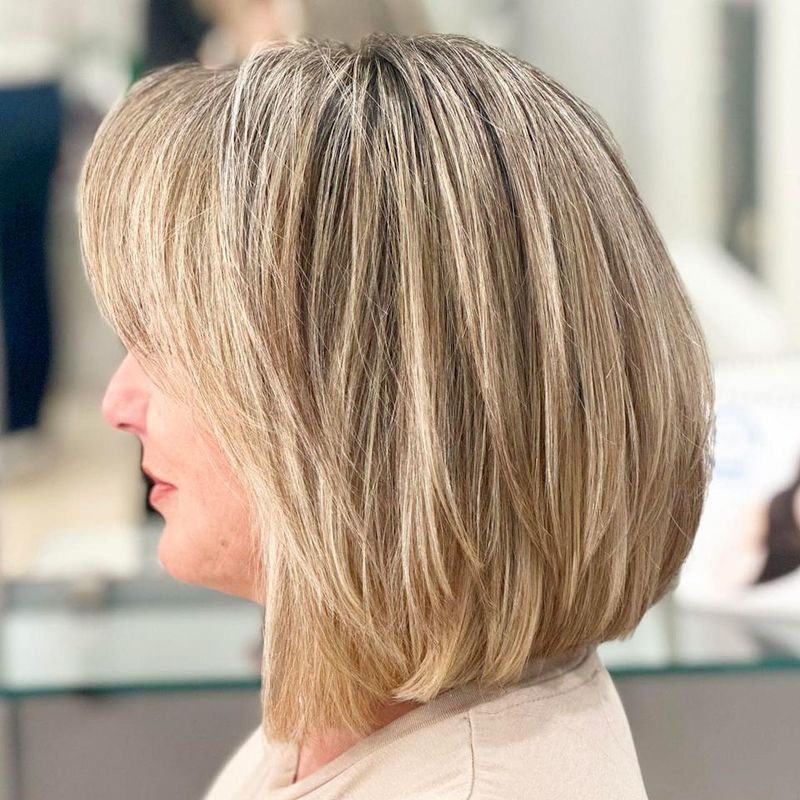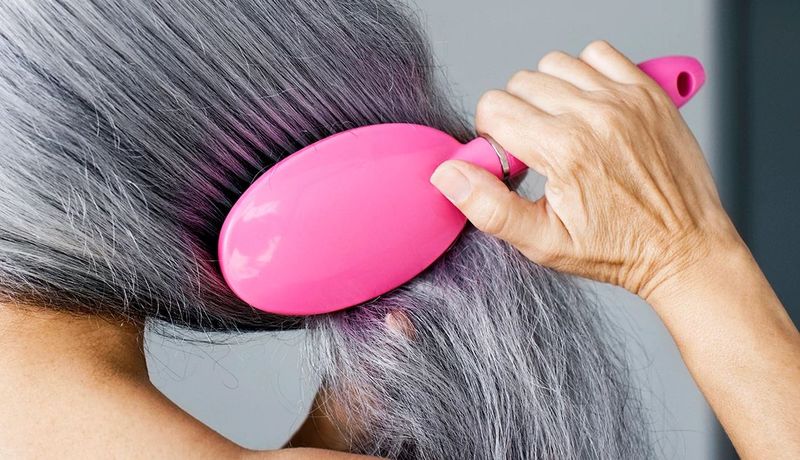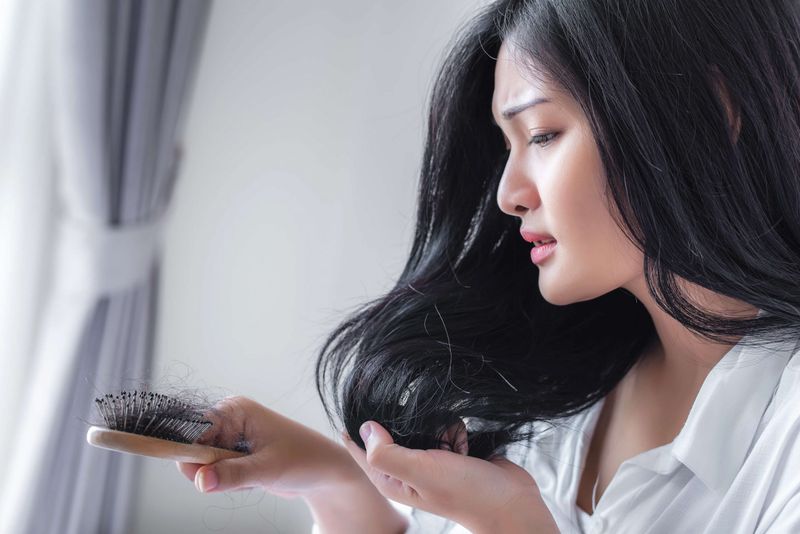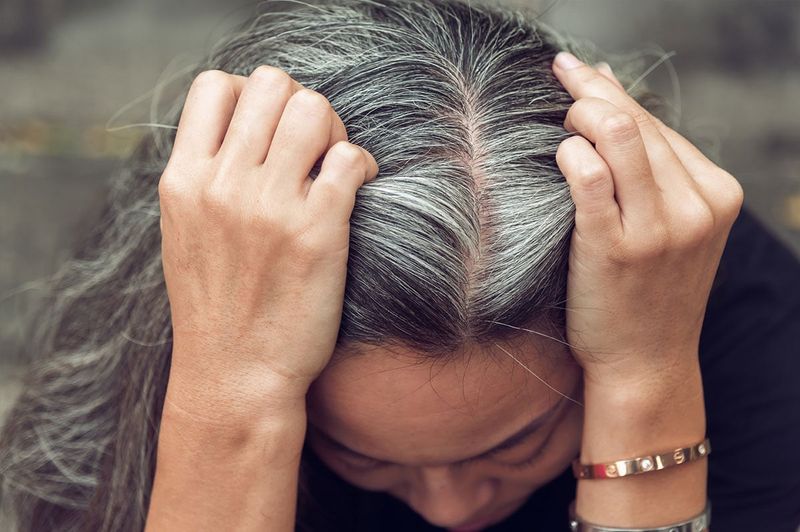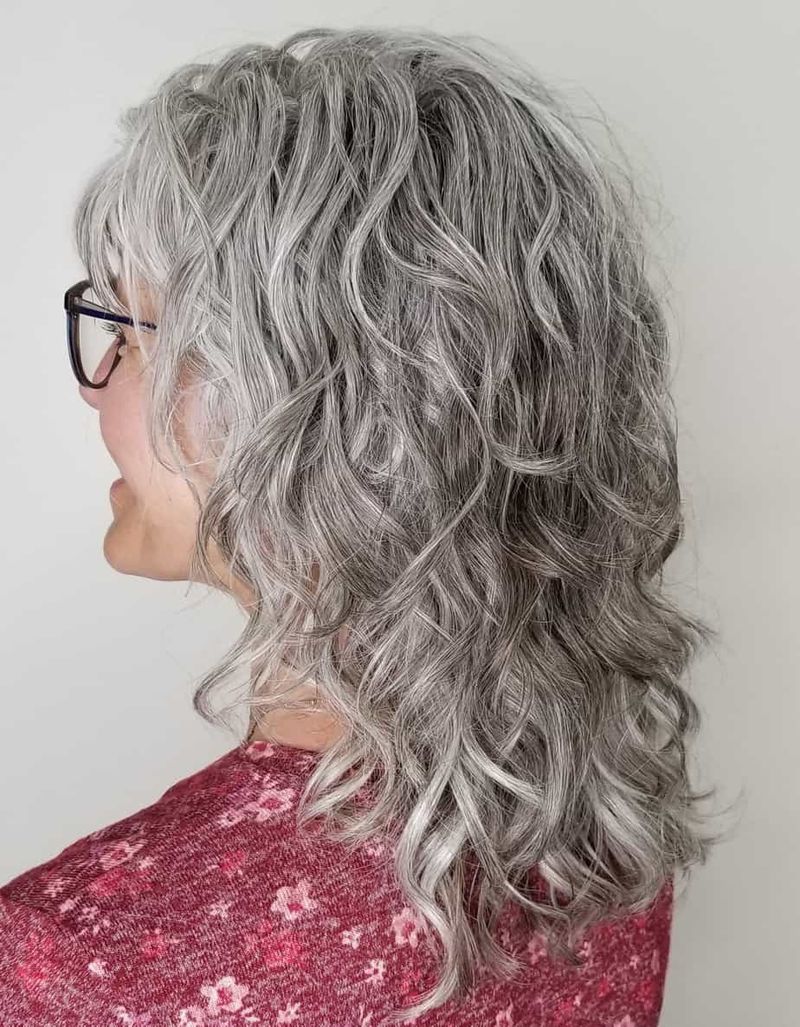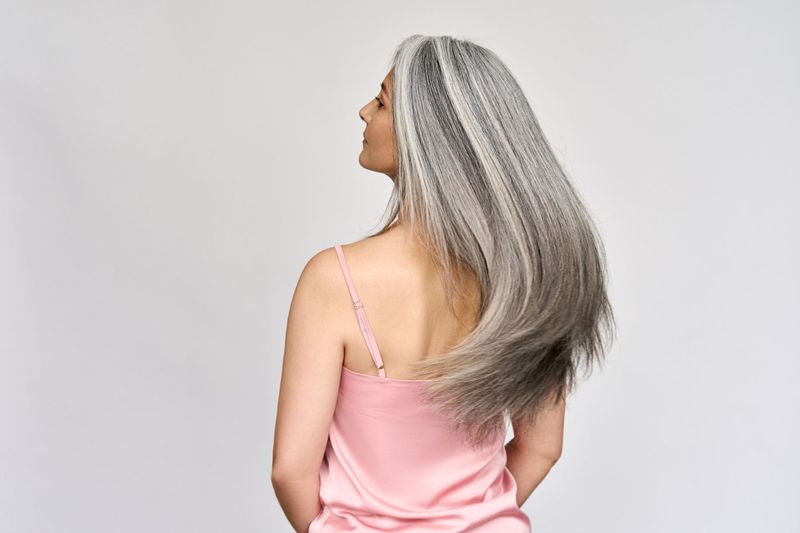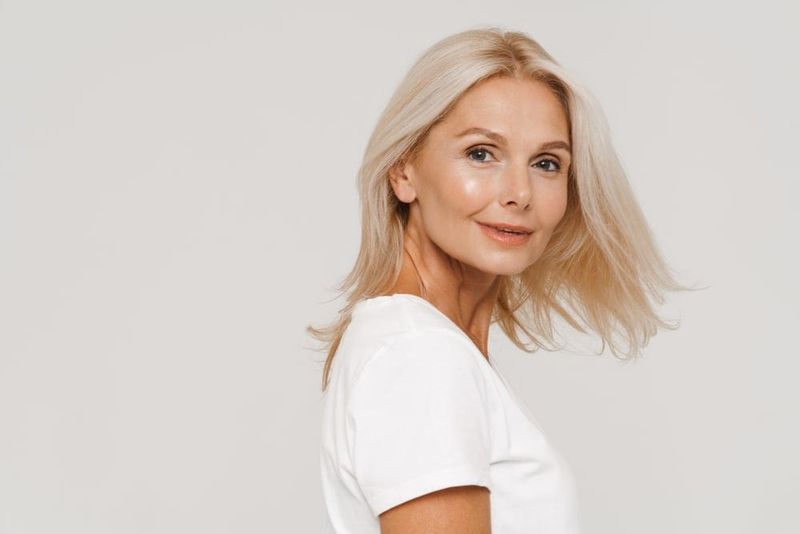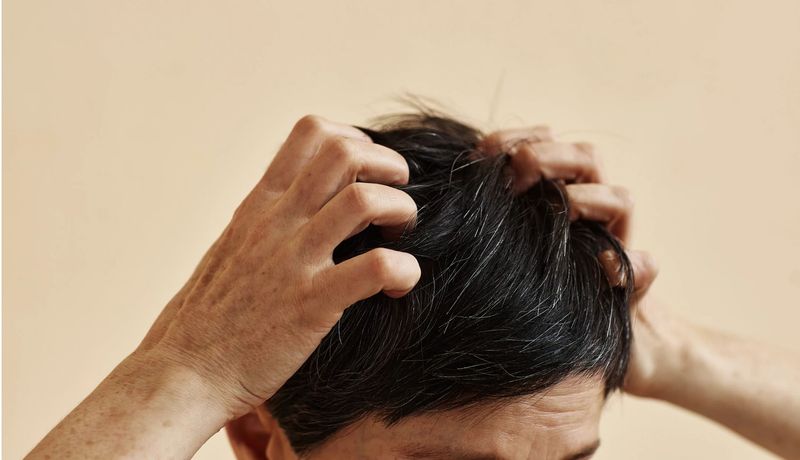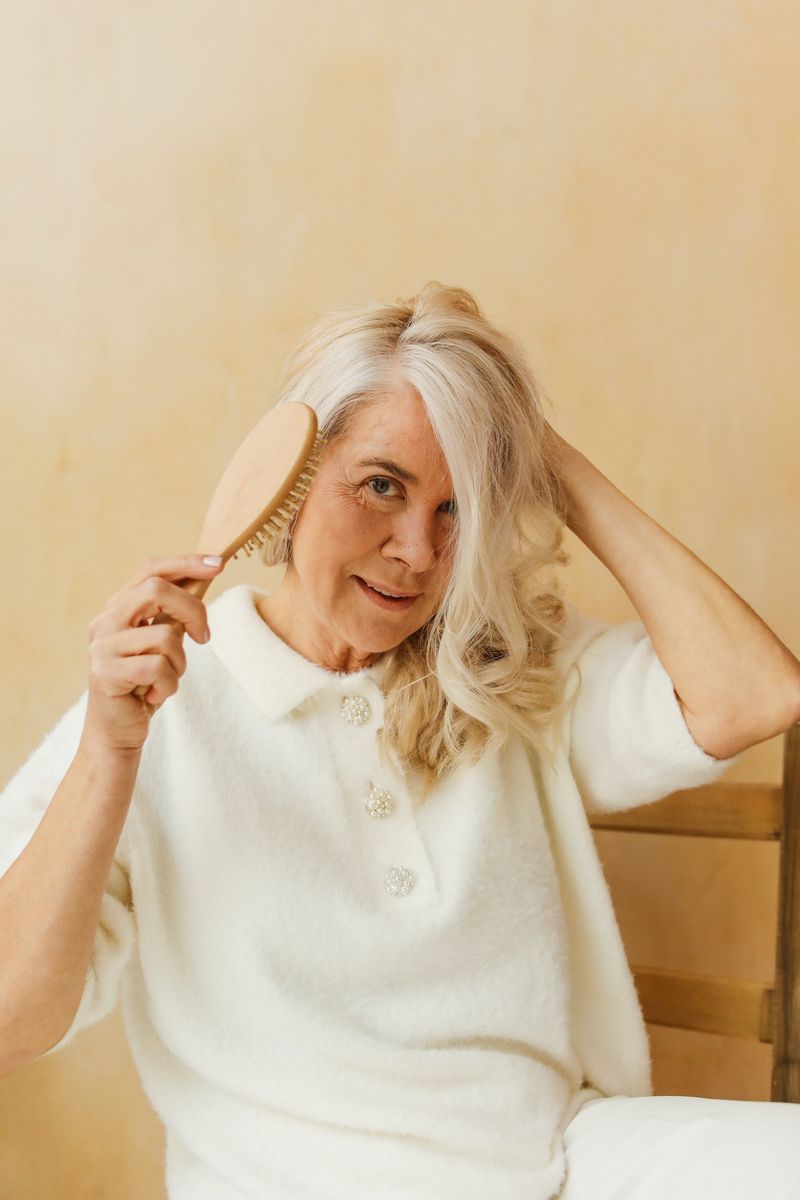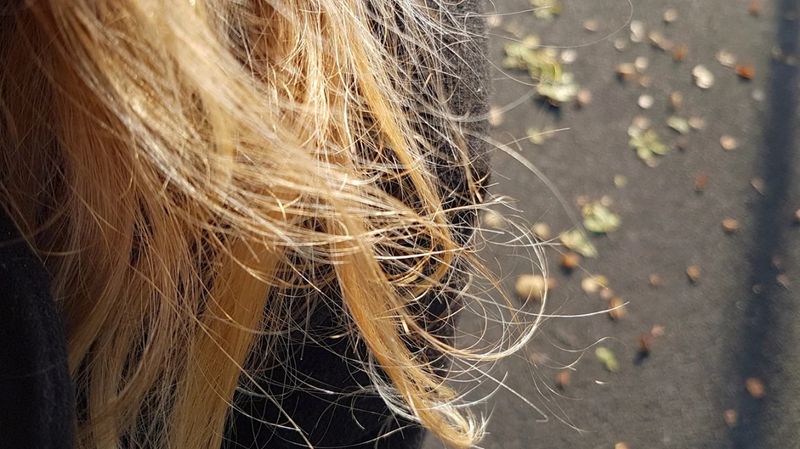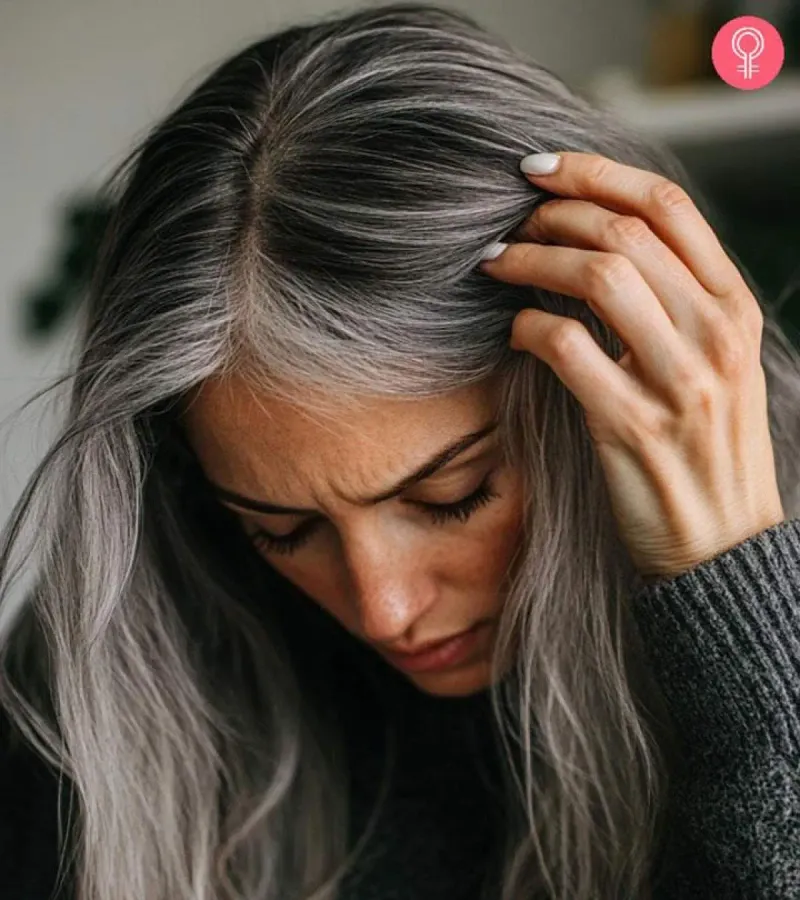Our hair has quite the journey as we grow older, and it’s a relationship that evolves in surprising ways. From texture shifts to color transformations, the strands atop our heads tell the story of our years. Understanding these changes can help us adapt our hair care routines and embrace each new phase with confidence and style.
1. Gray Hairs Make Surprise Appearances
Those first silver strands often show up when you least expect them, sometimes even in your twenties or thirties. Many people spot them around the temples first, like nature’s little highlights.
The gray revolution happens because hair follicles gradually produce less melanin, the pigment that gives your hair its color. Some folks embrace their silvers as badges of wisdom, while others reach for the dye bottle.
Related: -7 Straight-Hair Problems No One Talks About And 8 Easy Fixes That Shine
Interestingly, gray hair has a different texture than pigmented hair – often more wiry or coarse – which means you might need to adjust your hair care products to keep those silvers looking their best.
2. Thickness Takes a Nosedive
Remember that gloriously thick ponytail you could barely wrap a hair tie around? As the years pass, many people notice their once-abundant mane becoming noticeably thinner. Hair follicles shrink with age, producing finer, shorter hairs.
Hormonal changes play a major role here, especially during menopause for women or as testosterone levels fluctuate in men. Your trusty wide-tooth comb might start feeling unnecessarily large for the job.
Volumizing products become new bathroom staples, and you might find yourself exploring hairstyles that maximize the appearance of fullness rather than fighting against nature’s plan for your aging locks.
3. Oil Production Changes the Game
Your scalp’s oil factory goes through quite the transformation over time. That greasy-by-noon situation you battled in your teens and twenties? It gradually becomes a distant memory as oil glands become less active with age.
Many people find themselves switching from clarifying shampoos to hydrating formulas as their hair becomes increasingly dry. Gone are the days of daily washing – now your locks might actually look better on day two or three.
This shift brings both benefits and challenges: less oiliness means fewer washes, but you’ll need to find new ways to add moisture and shine that your scalp used to provide naturally.
4. Texture Takes Unexpected Turns
One day you might wake up wondering whose hair is on your head. The straight strands you’ve had forever suddenly develop a wave, or your curls might loosen or tighten without warning. These texture transformations often catch people by surprise.
Hormonal fluctuations, medication, and changes in your hair’s protein structure all contribute to these texture shifts. Someone who never needed styling products might suddenly find themselves researching curl creams or anti-frizz serums.
Learning to work with your hair’s new personality becomes an adventure. Many discover that fighting against these natural changes only leads to frustration, while embracing them opens up exciting styling possibilities they never considered before.
5. Growth Rate Slows Down Dramatically
The speedy growth you once relied on for quick recovery from bad haircuts becomes a thing of the past. Hair growth cycles naturally slow as we age, with each strand spending less time in the active growth phase.
While younger hair might grow about half an inch monthly, older hair might struggle to reach half that rate.
This slowdown makes patience more important than ever when growing out styles or recovering from hair disasters.
The upside? Fewer haircuts and less frequent touch-ups for color treatments. Many people find themselves adjusting to a new haircut schedule and appreciating styles that look good through longer growth periods.
6. Breakage Becomes a Bigger Concern
Hair that once bounced back from heat styling, tight ponytails, and harsh treatments starts showing its vulnerability. Aging hair has a thinner cuticle layer, making it more prone to damage and breakage from everyday handling.
The snap of hair breaking becomes an unwelcome sound during brushing or styling. Many people notice more short, broken pieces around their hairline or crown, areas that face the most friction and manipulation.
Gentle handling becomes non-negotiable, leading to softer brushes, satin pillowcases, and heat protectants becoming essential rather than optional. The silver lining? This fragility often inspires better hair care habits that would have benefited even youthful strands.
7. Color Fades More Quickly
That vibrant auburn or rich chocolate brown dye job that once lasted for months now seems to wash down the drain after just a few shampoos. Aging hair shafts become more porous, acting like tiny sponges that readily absorb color but release it just as easily.
The struggle to maintain color intensity becomes real, with many people scheduling more frequent salon visits or switching to at-home touch-up products. Color-depositing conditioners and shampoos find their way into shower caddies everywhere.
This change often leads to exploring lower-maintenance color options like balayage, highlights, or embracing natural silvers that don’t create such obvious roots when they grow out.
8. Styling Products Stop Working Their Magic
The holy grail products that once transformed your hair into magazine-worthy styles suddenly seem to fall flat. Your trusted mousse might leave hair crunchy rather than voluminous, or your favorite hairspray might weigh down strands instead of providing flexible hold.
Aging hair responds differently to styling ingredients as its porosity, texture, and moisture levels change. Many find themselves reluctantly parting with longtime favorite products and embarking on a new quest for suitable replacements.
Professional stylists become valuable allies during this transition, offering recommendations tailored to your hair’s evolving needs. The products that work best often contain more moisturizing ingredients and fewer drying alcohols than their predecessors.
9. Heat Styling Becomes Riskier Business
That flat iron you used daily in your twenties becomes a potential disaster weapon for your more delicate aging strands. Heat damage that once took months to appear now shows up almost immediately in the form of breakage, dullness, and split ends.
Many people find themselves reluctantly reducing their reliance on hot tools or investing in lower-temperature options. Air-drying and heat-free styling methods gain new appeal as protecting hair integrity becomes more important than achieving perfectly sleek looks.
When heat styling does happen, preparation becomes crucial – heat protectants, lower temperature settings, and limiting exposure time all help minimize damage to more vulnerable aging hair.
10. Haircuts Require Strategic Rethinking
The layered shag or super-long style you rocked for decades might suddenly stop flattering your face or hair texture. Aging hair often demands new approaches to cutting that account for changes in density, growth patterns, and overall health.
Many discover that shorter cuts provide the appearance of more volume and require less manipulation, reducing damage. Face-framing layers take on new importance as they can soften features and draw attention to your best attributes.
Finding a stylist who understands mature hair becomes invaluable – someone who can see beyond trendy styles to create cuts that work with your hair’s natural tendencies rather than fighting against them.
11. Scalp Issues Enter the Chat
Your scalp decides to join the aging conversation with some unwelcome changes of its own. Dryness, flaking, sensitivity, and even mysterious itchy patches can appear as skin cell turnover slows down and oil production decreases.
Scalp care evolves from an afterthought to a primary concern. Gentle exfoliation, specialized treatments, and soothing ingredients become essential parts of hair care routines that once focused solely on the strands themselves.
Many find that addressing scalp health actually improves overall hair appearance and growth. Using lukewarm rather than hot water, incorporating scalp massages, and finding the right balance of cleansing without stripping become important skills to master.
12. Hormonal Shifts Create Hair Havoc
Menopause, andropause, and other age-related hormonal transitions can trigger dramatic hair changes that seem to happen overnight. Hair loss patterns shift, with many women experiencing thinning at the crown or part line rather than just at the temples.
The hormonal roller coaster affects everything from growth cycles to oil production. Some people notice their hair suddenly growing in different directions or developing cowlicks where none existed before.
Working with healthcare providers becomes important for addressing these changes from the inside out. Hormone-related hair issues often respond to a combination of internal treatments (like hormone therapy when appropriate) and external solutions like specialized hair care products.
13. Environmental Damage Shows Up Faster
The sun, pollution, and harsh weather elements take a greater toll on aging hair than they once did. What previously might have caused minor dullness now results in noticeable brittleness, color fading, and texture changes after just brief exposure.
Protective measures become essential rather than optional. Hats, scarves, and UV-protective hair products earn permanent spots in daily routines, especially during outdoor activities.
Many people discover that seasonal hair care becomes necessary, with different products and approaches needed for winter dryness versus summer humidity. The environmental defense system for your hair grows more sophisticated as protecting its increasingly vulnerable structure becomes priority.
14. Recovery From Damage Takes Longer
That quick bounce-back your hair once had after coloring, perming, or heat styling becomes a distant memory. Recovery periods stretch out, with some damage becoming permanent rather than temporary.
Many find that treatments promising overnight repair deliver disappointingly modest results. Deep conditioning masks, protein treatments, and bond-building products require consistent, long-term use before showing meaningful improvement.
Patience becomes the most important hair care ingredient as expectations adjust to longer recovery timelines. This often leads to more preventative approaches rather than reactive ones – avoiding damage in the first place rather than trying to fix it afterward becomes the wiser strategy.
15. Your Emotional Connection Transforms
The relationship between identity and hair undergoes profound changes with age. Many people experience a shift from seeing hair primarily as a fashion statement to viewing it as a reflection of their health and vitality.
Hair changes can trigger unexpected emotional responses – grief for lost thickness or color, frustration with new limitations, or liberation in embracing natural texture and color. What once seemed like simple styling decisions now carry deeper meaning.
For many, this emotional evolution leads to greater self-acceptance. The realization that fighting against natural changes creates stress while embracing them creates freedom becomes a valuable life lesson that extends far beyond hair care.

